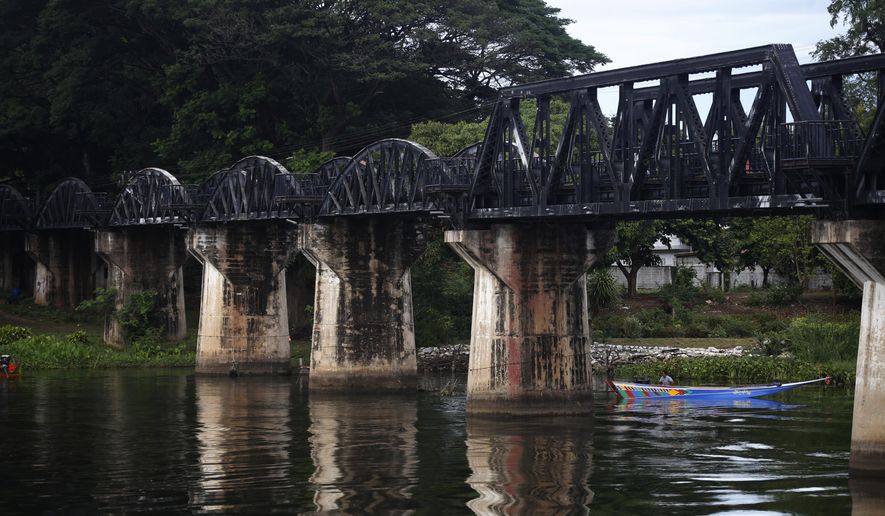BANGKOK — One of the last vestiges of the disruptions dating back to the Vietnam War days is falling by the wayside.
Tourists, gamblers, traders and residents can travel by train from Bangkok right up to the Thai-Cambodian border, the first time since tracks were cut 45 years ago when U.S. and Cambodian allied forces lost out to the Khmer Rouge forces of Pol Pot, who would go on to unleash the country’s notorious “killing fields” regime in the late 1970s.
The new rail link also serves to tighten the peacetime economies of former enemies Thailand and Cambodia, both of which are ruled by increasingly authoritarian leaders who have vowed to boost bilateral trade and other links.
The prospect that the rail line connection will extend beyond the border and deeper into Cambodia “means more than just bilateral trade,” the Nikkei Asian Review wrote in a recent analysis of the project. “It is also a symbol of improved ties between the two that have had a love-hate relationship since the 1200s.”
The two countries recently extended a Bangkok-Aranyaprathet railway line that crosses eastern Thailand. They repaired its final 3½-mile link between Aranyaprathet and the Ban Khlong Luek station on the Thai side of the border.
The State Railway of Thailand’s trains are now scheduled to depart each station twice a day: two at dawn and two at lunchtime.
It takes a taxing five hours to complete the 134-mile journey, though tickets cost less than $2.
“I remember taking the train from Bangkok to Aranyaprathet several years ago and then having to get a taxi to go from there to the border,” one traveler said. “But I see that the train from Bangkok will still take five hours to get there. Cattle grazing along the tracks will probably be moving faster than the train.”
Despite the modest nature of the hookup, the lines serve as Southeast Asia’s only trains to and from Cambodia, whose skeletal railway attempts to boost an economy that lags in many ways behind nearby “Asian tigers.”
Thai Prime Minister Prayuth Chan-ocha, who has headed the military-dominated government since a 2014 coup, and Cambodian Prime Minister Hun Sen, in power since 1998, gave the rail project new prominence when they shared a ride in April aboard a Thai train donated to Cambodia across the border from Ban Khlong Luek to Poipet, 4 miles inside Cambodia.
Passengers crossing the border have to disembark and walk through the immigration and customs checkpoint. Public and private vehicles are available on the Cambodian side to continue the journey.
Cambodia’s railway from Phnom Penh reaches Poipet, but it is unclear when it could be extended to the border for an unbroken link to Ban Khlong Luek.
The four trains on the Bangkok-Ban Khlong Luek route are diesel-powered. In Thailand, that often means passengers are forced to breathe the engine’s foul fumes while the train idles in a station before departure.
Tangled history
The route’s original railway service began in 1955, but a coup in Thailand temporarily halted the crossing.
Trains rolled again one year later but were canceled in 1961 because Thailand and Cambodia, frequent enemies and rivals dating back centuries, argued about who owned the stone ruins of Preah Vihear in a border zone that is contested to this day. The 11th century Hindu temple was linked to Cambodia’s nearby Angkor Wat complex.
The railway line opened again in 1970 but stopped for good on July 1, 1974, exactly 45 years before the official reopening last week. During those years, Thailand hosted U.S. air bases for attacks on Cambodia, Laos and Vietnam during the tail end of the Vietnam War.
Intense U.S. aerial bombardment and weak Cambodian government troops failed to stop communist Khmer Rouge guerrillas advancing on Cambodia’s capital, Phnom Penh.
Pol Pot’s victory in mid-1975 ushered in a xenophobic, ultra-Maoist “killing fields” regime that left nearly 2 million people dead and destroyed most of the country before Vietnam invaded in January 1979, ousted the Khmer Rouge and occupied the country for the next 10 years.
Thailand then became a conduit for U.S., British and other aid to an anti-Vietnamese Cambodian resistance, which included elements of the Khmer Rouge and other guerrillas.
After Vietnam’s withdrawal in 1989, border clashes between Thailand and Cambodia occasionally erupted from fortified positions until agreements were reached several years ago.
Pol Pot died in 1998. Under Mr. Hun Sen, Cambodia has achieved a measure of stability, enabling the two former foes to begin repairing the railway link in 2014.
Inexpensive flights link both countries and port traffic is on the rise, but the railway carries deep symbolic meaning. Road trips across the border are also popular among Thais and gamblers who flock to glitzy casinos constructed during the past several years in Poipet. Gambling is illegal in Thailand.
Among the import-export traders who cross the border each day are Cambodian smugglers who bring most of the high-quality, made-in-China counterfeit goods sold in Thailand, Bangkok vendors and counterfeiters say.
The most dangerous and feared smugglers are suspected of operating safe houses for imported counterfeit items in and around Aranyaprathet in Thailand’s Sa Kaeo province close to a popular secondhand market known as Rong Kluea, or Salty Warehouse, investigators said.




Please read our comment policy before commenting.